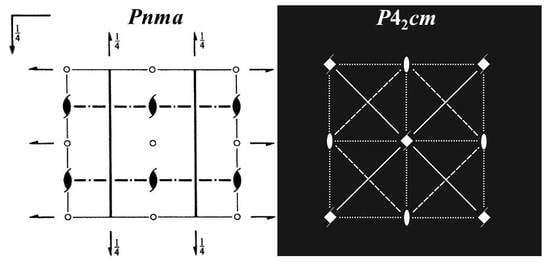E. S. Fedorov Promoting the Russian-German Scientific Interrelationship †
Abstract
1. Introduction
2. On the Congenial Action of E. S. Fedorov and A. Schoenflies
3. Evgraf von Fedorov and Paul von Groth Promoted Significant Advances in Crystallography
3.1. Getting E. S. Fedorov as Author, Referee and Consultant
3.2. New Experimental Tools for Crystallographic Studies
3.3. From Morphology to Crystal Chemistry
4. 100 Years after Fedorov: Postclassical Crystallography
5. Conclusions
Supplementary Materials
Author Contributions
Funding
Acknowledgments
Conflicts of Interest
References
- Bokij, G.B.; Šafranovskij, I.I. Vyvod 230 prostranstvennych grupp simmetrii (Derivation of 230 symmetry groups in space). In Naučnoe Nasledstvo; Izd-vo AN SSSR: Moscow, Russia, 1951; Volume 2, pp. 297–313. [Google Scholar]
- Šafranovskij, I.I.; Belov, N.V. Memoriam: E. S. Fedorov 1853–1919. In Fifty Years of X-ray Diffraction; Ewald, P.P., Ed.; International Union of Crystallography: Utrecht, The Netherlands, 1962; pp. 341–350. [Google Scholar]
- Burckhardt, J.J. Zur Geschichte der Entdeckung der 230 Raumgruppen (About the history of discovery of the 230 space groups). Arch. Hist. Exact Sci. 1967, 4, 235–246. [Google Scholar] [CrossRef]
- Burckhardt, J.J. Der Briefwechsel von E. S. von Fedorow und A. Schoenflies, 1889–1908 (The correspondence between E. S. von Fedorow and A. Schoenflies). Arch. Hist. Exact Sci. 1971, 7, 91–141. [Google Scholar] [CrossRef]
- Senechal, M.; Galiulin, R.V. An introduction to the theory of figures: The geometry of E. S. Fedorov. Struct. Topol. 1984, 10, 5–22. [Google Scholar]
- Scholz, E. Symmetrie, Gruppe, Dualität (Symmetry, Group, Duality); Deutscher Verlag der Wissenschaften: Berlin, Germany, 1989. [Google Scholar]
- Šafranovskij, I.I.; Frank-Kameneckij, V.A.; Dolivo-Dobrovol’skaja, E.M. (Eds.) Evgraf Stepanovič Fedorov, Perepiska. Neizdannye i Maloizvestnye Raboty (Evgraf Stepanovič Fedorov, Correspondence. Unpublished and Little-Known Works); Nauka; Naučnoe nasledstvo: Leningrad, Russia, 1991; Volume 16. [Google Scholar]
- Filatov, S.K., Urusov, V.S., Eds.; Dedicated to the 300th Anniversary of St. Petersburg and the 150th Anniversary of E. S. Fedorov. X-ray Diffraction and Spectroscopy of Minerals. In Proceedings of the XV International Meeting on Crystal Chemistry on X-ray Diffraction & Crystal Chemistry of Minerals, Saint Petersburg, Russia, 15–19 September 2003. [Google Scholar]
- Galiulin, R.V. To the 150th anniversary of the birth of Evgraf Stepanovich Fedorov (1853–1919). Irregularities in the fate of the theory of regularity. Crystall. Rep. 2003, 6, 899–913. [Google Scholar] [CrossRef]
- Kaemmel, T.H. Arthur Moritz Schoenflies 2003, 150. Geburtstag und 75. Todestag (Arthur Moritz Schoenflies 2003, 150th anniversary of birth and 75th anniversary of death). Dtsch. Mineral. Ges. DMG-Forum 2004, 87, 1–5. [Google Scholar]
- Fritsch, R. Schoenflies, Arthur. In Neue Deutsche Biographie (NDB), Band 23; Duncker & Humblot Verlag: Berlin, Germany, 2007. [Google Scholar]
- Meniailov, A. Fyodorov (or Fedorov), Evgraf Stepanovich. In Complete Dictionary of Scientific Biography; Charles Scribner’s Sons: New York, NY, USA, 2008. [Google Scholar]
- Kubbinga, H. Crystallography from Haüy to Laue: Controversies on the molecular and atomistic nature of solids. Z. Krist. 2012, 227, 1–26. [Google Scholar] [CrossRef]
- Authier, A. Early Days of X-ray Crystallography; IUCr Oxford University Press: Oxford, UK, 2013. [Google Scholar]
- Fedorov, E.S. Očerki, Vospominanija Sovremennnikov, Materialy (Essays, Reminiscences of Contemporaries, Materials); Sb. Statej. Sost. I red.; Frank-Kameneckij, V.A., Šafranovskij, I.I., Glazov, A.I., Eds.; Ser. 1; Trudy St. Peterburgsk. Obščestva Estestvoispytatelej; Izd-vo St. Peterburgsk. Gos. Univ.: St. Petersburg, Russia, 1999; Volume 93, 144p. [Google Scholar]
- Steinmetz, H.; Weber, L. Paul v. Groth. Der Gründer der Zeitschrift für Kristallographie (1843–1927) (Paul v. Groth. Founder of Zeitschrift für Kristallographie (1843–1927)). Z. Kristallogr. 1939, 100, 5–46. [Google Scholar]
- 5 + 50 let Geologičeskij fakul‘tet SPbGU, istorija vypuska 1958-1963 (5+50 Years Geological Faculty, History of the Age-Group 1958–1963); Izd-vo SOLO: St. Peterburg, Russia, 2013; 345p.
- Fedorova, L.V. Naši budni, Radosti i Goresti. Vospominanija (Our everyday life, joys and sorrows. Reminiscences).; Naučnoe nasledstvo; Nauka: Moscow, Russia, 1992; Volume 20, 370p. [Google Scholar]
- Sohncke, L. Entwickelung einer Theorie der Krystallstruktur (Development of a Theory of Crystal Structure); Teubner: Leipzig, Germany, 1879. [Google Scholar]
- Schoenflies, A. Über Gruppen von Bewegungen; 1 und 2. Abh. (About groups of motion.). Math. Ann. 1887, 28, 319–342. [Google Scholar]
- Schoenflies, A. Über Gruppen der Transformation des Raumes in sich (About groups of transformations of space into itself). Math. Ann. 1889, 34, 172–203. [Google Scholar]
- Schoenflies, A. Ueber reguläre Gebietstheilungen des Raumes (About regular domain-partitioning of space). Nachr. Königl. Gesell. Wiss. Göttingen 1888, 9, 223–237. [Google Scholar]
- Schoenflies, A. Beitrag zur Theorie der Krystallstructur (Contribution to the theory of crystal structure). Nachr. Königl. Gesell. Wiss. Göttingen 1888, 17, 483–501. [Google Scholar]
- Schoenflies, A. Über das gegenseitige Verhältniß der Theorieen über die Structur der Krystalle (About the interrelation of theories on the structure of crystals). Nachr. Königl. Gesell. Wiss. Göttingen 1890, 6, 239–250. [Google Scholar]
- Fedorov, E.S. Protokol obyknovennago zasedanija 21-go Nojabrja 1889 goda (Minutes of the regular session of 21 November 1889). Zapiski imperator. S.Pet.Mineralog. Obščestva 1890, 26, 451–455. [Google Scholar]
- Fedorov, E.S. Simmetrija pravil’nich system figur (Symmetry of regular systems of figures). Zap. Imperatorsk. S-Peterburgsk. Mineral. Obščestva Verhandl. d. Russisch-Kaiserl. Mineral. Gesellschaft zu St. Petersburg 1891, 28, 1–146. [Google Scholar]
- Fedorow, E. Ueber seine beiden Werke: 1. Die Symmetrie der endlichen Figuren. 2. Die Symmetrie der regelmässigen Systeme der Figuren (About both of his works: 1. The symmetry of finite figures. 2. The symmetry of regular systems of figures). Neues Jahrbuch für Mineralogie, Geologie und Paläontologie 1891, 1, 113–116. [Google Scholar]
- Bokij, G.B.; Šafranovskij, I.I. Iz perepiski E. S. Fedorova s A. Šenflisom (From the correspondence between E. S. Fedorov and A. Schoenflies). In Naučnoe Nasledstvo; Izd-vo Akademii Nauk: Moscow, Russia, 1951; Volume 2, pp. 314–340. [Google Scholar]
- Fedorow, E.V. Zusammenstellung der krystallographischen Resultate des Herrn Schoenflies und der meinigen (Compilation of the crystallographic results of Mr. Schoenflies and of mine). Z. Kryst. 1892, 20, 25–75. [Google Scholar]
- Schoenflies, A. Krystallsysteme und Krystallstructur (Crystal systems and crystal structure); B. G. Teubner: Leipzig, Germany, 1891. [Google Scholar]
- Schoenflies, A. Bemerkung zu dem Artikel des Herrn E. von Fedorow, die Zusammenstellung seiner krystallographischen Resultate und der meinigen betreffend (Remark on the article of Mr. E. von Fedorow, related to his crystallographic results and to mine). Z. Kryst. 1892, 20, 259–262. [Google Scholar]
- Fedorow, E.V. Universal-(Theodolith-) Methode in der Mineralogie und Petrographie. I.Theil (Universal (Theodolith) method in mineralogy and petrography. Part I.). Z. Kryst. 1893, 21, 574–714. [Google Scholar]
- Hilton, H. A comparison of various notations employed in “Theories of Crystal-structure,” and a revision of the 230 groups of movements. Phil. Mag. Ser 6 1902, 3, 203–212. [Google Scholar] [CrossRef]
- Nowacki, W. Bemerkungen zur Geschichte der Raumgruppen-Symbole von Fedorow, Schoenflies und Hermann-Mauguin (Remarks on the history of the space-group symbols of Fedorow, Schoenflies and Hermann-Mauguin). Z. Kristallogr. 1972, 135, 145–178. [Google Scholar] [CrossRef]
- Paufler, P. William Barlow’s early publications in the ‘Zeitschrift für Krystallographie und Mineralogie’ and their influence on crystal structure research. Z. Kristallogr. 2019, 234, 769–785. [Google Scholar] [CrossRef]
- Kraus, E.H. Paul Heinrich von Groth. Science 1926, 67, 150–152. [Google Scholar] [CrossRef] [PubMed]
- Menzer, G. Paul von Groth. In Neue Deutsche Biographie (NDB). Band 7; Duncker & Humblot: Berlin, Germany, 1966. [Google Scholar]
- Faltheiner, O. Ein Münchener Mineraloge aus Sachsen. Skizzen zur Geschichte der Mineralogie als Erinnerung an Paul v. Groth anläßlich seiner Berufung nach München vor 100 Jahren (A Munich mineralogist from Saxony. Sketches on the history of mineralogy in remembrance of Paul v. Groth on the occasion of his appointment to Munich 100 years ago). Kult. und Tech. 1985, 1, 44–53. [Google Scholar]
- Faltheiner, O. Briefwechsel E. S. v. Fedorow (St. Petersburg)—P. H. v. Groth (München): Ein histor. Dokument zum Ende d. klass. Kristallographie (Correspondence E. S. v. Fedorov (St. Petersburg)—P. H. v. Groth (Munich): A Historic Document at the End of the Classical Crystallography). PhD Thesis, Fak. f. allg. Wiss., TU München, München, Germany, 1973. [Google Scholar]
- Groth, P.V. Physikalische Krystallographie und Einleitung in die Kenntniss der wichtigsten Substanzen (Physical Crystallography and Introduction to the Knowledge of Important Substances); Engelmann: Leipzig, Germany, 1905. [Google Scholar]
- Fedorow, E.V. Theorie der Krystallstructur. Einleitung. Regelmässige Punktsysteme (mit übersichtlicher graphischer Darstellung) (Theory of crystal structure. Introduction. Regular point systems (with clearly arranged graphics)). Z. Kryst. 1895, 24, 209–252. [Google Scholar]
- Fedorow, E.V. Theorie der Krystallstruktur. I. Theil. Mögliche Structurarten (Theory of crystal structure. Part I. Possible kinds of structure). Z. Kryst. 1896, 25, 113–224. [Google Scholar]
- Fedorow, E.V. Das Sphärotrigonometer. Ein Instrument zur genauen graphischen Lösung von Aufgaben der krystallographischen und sphärischen Trigonometrie (The sphero-trigoniometer. An instrument enabling exact graphical solutions of problems in crystallographic and spherical trigoniometry). Z. Kryst. 1909, 46, 197–202. [Google Scholar]
- Fedorow, E.V. Die größtmögliche Vereinfachung bei zonalen Berechnungen und krystallographischen Berechnungen im allgemeinen (The utmost simplification of zonal calculations and crystallographic calculations in general). Z. Kryst. 1909, 46, 202–210. [Google Scholar]
- Fedorow, E.V. Wie soll man die Fehler der Excentrität bei billigen Universalgoniometern vermeiden? (How can errors of excentrity be avoided with cheap universal goniometers?) Z. Kryst. 1909, 46, 215. [Google Scholar]
- Fedorow, E.V. Auflösung einiger Aufgaben der stereographischen Projektion (Solution of some exercises of stereographic projection). Z. Kryst. 1892, 20, 357–361. [Google Scholar]
- Fedorow, E.V. Die einfachste Form des Universaltischchens (The simplest form of the universal table). Z. Kryst. 1895, 24, 602–603. [Google Scholar]
- Fedorow, E.V. Einfaches Verfahren zur Bestimmung des absoluten optischen Zeichens eines unregelmässigen Mineralkörnchens in Dünnschliffen (Simple procedure to determine the absolute optical sign of an irregular mineral granule in a transparent cut). Z. Kryst. 1895, 24, 603–605. [Google Scholar]
- Fedorow, E.V. Ueber die Anwendung des Dreispitzzirkels für krystallographische Zwecke (About the application of a 3-pont divider). Z. Kryst. 1903, 37, 138–142. [Google Scholar]
- Goldschmidt, V. Goniometer mit zwei Kreisen (A two-circle goniometer). Z. Kryst. 1893, 21, 210–232. [Google Scholar]
- Czapski, S. Ein neues Krystallgoniometer (A new crystal goniometer). Z. Instrum. 1893, 13, 1–5. [Google Scholar]
- Czapski, S. Ueber Goniometer mit zwei Kreisen (About two-circle goniometers). Z. Instrum. 1893, 13, 242–244. [Google Scholar]
- Fedorow, E.V. Universal-(Theodolith-) Methode in der Mineralogie und Petrographie II. Theil. Krystalloptische Untersuchungen (Universal (Theodolith) method in mineralogy and petrography. Part II. Crystallooptical studies). Z. Kryst. 1894, 22, 229–268. [Google Scholar]
- Barlow, W. A mechanical cause of homogeneity of structure and symmetry geometrically investigated; with special application to crystals and to chemical combination. Sci. Proc. Roy. Dublin Soc. 1897, 8, 527–690. [Google Scholar] [CrossRef][Green Version]
- Filatov, S.K. Simmetrijnaja statistika mineral‘nych vidov v različnych termodinamičeskych obstanovkach (Symmetry statistics of mineral species in various thermodynamic conditions). Proceed. Russ. Miner. Soc. 2019, 148, 1–13. [Google Scholar]
- Nowacki, W. Symmetrie und physikalisch-chemische Eigenschaften krystalliner Verbindungen. I. Die Verteilung der Krystallstrukturen über die 219 Raumgruppen (Symmetry and physico-chemical properties of crystalline compounds. I. The frequency of crystal structures among 219 space groups). Helv. Chim. Act. 1942, 25, 863–878. [Google Scholar]
- Nowacki, W. Symmetrie und physikalisch-chemische Eigenschaften kristallisierter Verbindungen. VI. Die Verteilung der Kristallstrukturen über die Raumgruppen und die allgemeinen Bauprinzipien kristallisierter organischer Verbindungen (Symmetry and physico-chemical properties of crystalline compounds. VI. The frequency of crystal structures among space groups and the general construction principles of crystalline organic compounds). Helv. Chim. Act. 1951, 34, 1957–1962. [Google Scholar]
- Fedorow, E.V.; Artemiev, D.; Barker, T.T.; Orelkin, B.; Sokolov, W. Das Krystallreich. Tabellen zur rystallochemischen Analyse. Mit Atlas (The crystal realm. Tables for crystallochemical analysis. With Atlas). Zapiski Rossijskoj Akademii Nauk, Fiz-Mat. Otd. 1920, 36, 1–1050. [Google Scholar]
- Friedrich, W.; Knipping, P.; Laue, M. Interferenz-Erscheinungen bei Röntgenstrahlen (Interference patterns with X-rays). Sitzungsber. Kgl. Bayer. Akad. Wiss. 1912, 14, 303–322. [Google Scholar]
- Laue, M. Eine quantitative Prüfung der Theorie für die Interferenzerscheinungen bei Röntgenstrahlen (A quantitative check of the theory of interference patterns with X-rays). Sitzungsber. Kgl. Bayer. Akad. Wiss. 1912, 14, 363–373. [Google Scholar]
- Bragg, W.H.; Bragg, W.L. The reflection of X-rays by crystals. Proc. R. Soc. 1913, A88, 428–438. [Google Scholar] [CrossRef]
- Bragg, W.L. The structure of some crystals as indicated by their diffraction of X-rays. Proc. R. Soc. 1913, A89, 248–277. [Google Scholar]
- Fedorow, E.V. Die Praxis in der krystallochemischen Analyse und die Abfassung der Tabellen für dieselbe (The practice of crystallochemical analysis and the composition of tables for it). Z. Kryst. 1912, 50, 513–576. [Google Scholar]
- Stensen, N. De solido intra solidum naturaliter contento dissertationis prodromus. Stellae: Florentiae, 1669. Vorläufer einer Dissertation über feste Körper, die innerhalb anderer fester Körper von Natur aus eingeschlossen sind (Precursor of a thesis on solids, which are naturally enclosed in other solids). In Ostwald‘s Klassiker der Exakten Wissenschaften 209; Akad. Verlagsges: Leipzig, Germany, 1923. [Google Scholar]
- Mitscherlich, E. Über die Kristallisation der Salze, in denen das Metall der Basis mit zwei Proportionen Sauerstoff verbunden ist (About the Crystallization of Salts, the Base Metal of which Is Bound to Two Proportions of Oxygen). Abh. kgl. Akad. Wiss. Berlin 1818–1819, 427–437; Georg Reimer: Berlin, Germany, 1820. [Google Scholar]
- Fedorow, E.V. Reticuläre Dichtigkeit und erfahrungsgemässe Bestimmung der Krystallstructur (Reticular density and empirical crystal structure determination). Z. Kryst. 1902, 36, 209–233. [Google Scholar]
- Sokolow, W.J.; Artemiew, D.N.; Fedorow, E.S. Direkte tabellarische Ablesung der Netzdichtigkeiten der Krystallflächen (The direct tabulated reading of net densities of crystal faces). Z. Kryst. 1911, 48, 377–401. [Google Scholar]
- Fedorov, E.S. Simmetrija na ploskosti (Symmetry in the plane). Zap. Imperatorsk. S.-Peterburgsk. Mineral. Obščestva.Verhandl. d. Russisch-Kaiserl. Mineral. Gesellschaft zu St.Petersburg 1891, 28, 345–389. [Google Scholar]
- Fedorov, E.S. Simmetrija konečnych figur (Symmetry of finite figures). Zap. Imperatorsk. S.-Peterburgsk. Mineral. Obščestva. Verhandl. d. Russisch-Kaiserl. Mineral. Gesellschaft zu St. Petersburg 1889, 25, 1–52. [Google Scholar]
- Fedorow, E.V. Reguläre Plan- und Raumtheilung (Regular partitioning of planes and spaces). Abhandl. d. d. Königl. Bayer. Akad. d. Wiss., Mathemat. Physikal. Classe 1900, 20, 467–588. [Google Scholar]
- Sohncke, L. Die regelmässigen ebenen Punktsysteme von unbegrenzter Ausdehnung (The regular plane point systems of infinite extension). Journal für die Reine und Angewandte Mathematik 1874, 77, 47–101. [Google Scholar]
- Niggli, P. Die Flächensymmetrien homogener Diskontinuen (Plane symmetries of homogeneous discontinua). Z. Krist. 1924, 60, 283–298. [Google Scholar]
- Pólya, G. Über die Analogie der Kristallsymmetrie in der Ebene (About the analogy of crystal symmetry in the plane). Z. Krist. 1924, 60, 278–282. [Google Scholar]
- Hermann, C. Zur systematischen Strukturtheorie. III. Ketten-und Netzgruppen (Concerning the systematic structure theory. III. Chain and net groups). Z. Krist. 1929, 69, 250–270. [Google Scholar]
- Weber, L. Die Symmetrie homogener ebener Punktsysteme (The symmetry of homogeneous plane point systems). Z. Krist. 1929, 70, 309–327. [Google Scholar]
- Alexander, E.; Herrmann, K. Die 80 zweidimensionalen Raumgruppen (The 80 two-dimensional space groups). Z. Krist. 1929, 70, 328–345. [Google Scholar]
- Heesch, H. Zur Strukturtheorie der ebenen Symmetriegruppen (Concerning the structure theory of plane symmetry groups). Z. Krist. 1929, 71, 95–102. [Google Scholar]
- Niggli, P. Die regelmäßige Punktverteilung längs einer Geraden in einer Ebene. Symmetrie von Bordürenmuster (The regular distribution of points along a straight line in a plane. Symmetry of patterns of bordures). Z. Krist. 1926, 63, 255–274. [Google Scholar]
- Alexander, E. Systematik der eindimensionalen Raumgruppen (Systematics of one-dimensional space groups). Z. Krist. 1929, 70, 367–382. [Google Scholar]
- Jones, O. The Grammar of Ornament. A Visual Reference of Form and Colour in Architecture and the Decorative Arts; Day & Son: London, UK, 1856. [Google Scholar]
- Šubnikov, A.V.; Kopcik, V.A. Simmetrija v Nauke i Iskusstve (Symmetry in Science and Art); Izd. Nauka: Moscow, Russia, 1972. [Google Scholar]
- Bigalke, H.G. Heinrich Heesch. Kristallgeometrie, Parkettierungen, Vierfarbenforschung (Heinrich Heesch. Crystal Geometry, Tesselations, Four-Color Research); Birkhäuser: Berlin, Germany, 1988. [Google Scholar]
- Heesch, H. Zur systematischen Strukturtheorie. III. Über die vierdimensionalen Gruppen des dreidimensionalen Raumes (Concerning the systematic structure theory. III. About the four-dimensional groups of three-dimensional space). Z. Krist. 1930, 73, 325–345. [Google Scholar]
- Šubnikov, A.V. Novoe v Učenii o Simmetrii i Ego Primenenii (Latest in Teaching Symmetry and its Application). In Sb. Otčët ob obščem sobranii AN SSSR 14-17 oktjabrja 1944 g.; Izd. Akademii Nauk SSSR: Moscow, Russia, 1945. [Google Scholar]
- Kopcik, V.A. Šubnikovskie gruppy. Spravočnik po simmetrii i fizičeskim svojstvam kristalličeskich struktur (Šubnikov groups. Manual of Symmetry and Physical Properties of Crystalline Structures); Izd. Moskovskogo Universiteta: Moscow, Russia, 1966. [Google Scholar]
- Curie, P. Sur la symétrie dans les phénomènes physiques, symétrie d’un champ électrique et d’un champ magnétique. J. Phys. Théor. Appl. 1894, 3, 393–415. [Google Scholar] [CrossRef]
- Schubnikow, A. Über die Symmetrie des Kontinuums (About the symmetry of the continuum). Z. Krist. 1930, 72, 272–290. [Google Scholar]
- Heesch, H. Zur systematischen Strukturtheorie. IV. Über die Symmetrie zweiter Art in Kontinuen und Semidiskontinuen (On the systematic structure theory. IV. About the symmetry of second kind in continua and semicontinua). Z. Krist. 1930, 73, 346–356. [Google Scholar]
- Šubnikov, A.V. Polnaja sistematika točečnych černo-belych grupp (Complete systematics of black-white point groups). Kristallografija 1961, 6, 490–495. [Google Scholar]
- Šubnikov, A.V. Antisimmetrija tekstur (Antisymmetry of textures). Kristallografija 1958, 3, 263–268. [Google Scholar]
- Shull, C.G.; Smart, J.S. Detection of antiferromagnetism by neutron diffraction. Phys. Rev. 1949, 76, 1256–1257. [Google Scholar] [CrossRef]
- Tavger, B.A.; Zaitsev, V.M. Magnetic symmetry of crystals. Sov. Phys. J. Exp. Theor. Phys. 1956, 3, 430–436. [Google Scholar]
- Šubnikov, A. Simmetrija i antisimmetrija konečnych figur (Symmetry and Antisymmetry of finite Figures); Izd. Akademii Nauk SSSR: Moscow, Russia, 1951. [Google Scholar]
- Wondratschek, H. Introduction to space-group symmetry. In International Tables for Crystallography. Vol. A: Space-Group Symmetry, 5th ed.; Hahn, T.H., Ed.; Kluwer Academic Publishing: Dordrecht, The Netherlands, 2002; pp. 719–740. [Google Scholar]
- Zamorzaev, A.M. Obobščenie fedorovskich grupp. Avtoreferat dissertacii. Leningrad 1953 (Generalization of Fedorov groups. Thesis, auto-abstract). Kristallografija 1957, 2, 15–20. [Google Scholar]
- Belov, N.V.; Neronova, N.N.; Smirnova, T.S. 1651 Šubnikovskaja gruppa (1651 Šubnikov groups). Kristallografija 1955, 2, 315–325. [Google Scholar]
- Janssen, T.; Janner, A. Aperiodic crystals and superspace concepts. Acta Cryst. 2014, B70, 617–651. [Google Scholar] [CrossRef]
- Shechtman, D.; Blech, I.; Gratias, D.; Cahn, J.W. Metallic phase with long-range orientational order and no translational symmetry. Phys. Rev. Lett. 1984, 20, 1951–1953. [Google Scholar] [CrossRef]
- Smith, G.F.H. Ueber das bemerkenswerthe Problem der Entwickelung der Krystallformen des Calaverit (About the remarkable problem of the evolution of crystal forms of Calaverite). Z. Kryst. 1903, 37, 209–234. [Google Scholar]
- Fedorow, E.V. Notiz, betreffend die Krystallisation des Calaverit (Note concerning the crystallization of Calaverite). Z. Kryst. 1903, 37, 611–618. [Google Scholar]
- Goldschmidt, V.; Palache, C.H.; Peacock, M. Über Calaverit (About Calaverite). Neues Jahrb. Mineral. 1931, 63, 1–58. [Google Scholar]
- Janner, A.; Dam, B. The morphology of calaverite (AuTe2) from data of 1931. Solution of an old problem of rational indices. Acta Cryst. 1989, A45, 115–123. [Google Scholar] [CrossRef]
- Streltsov, S.V.; Roizen, V.V.; Ushakov, A.V.; Oganov, A.R.; Khomskii, D.I. The puzzle of incommensurate crystal structure of calaverite AuTe2 and predicted stability of novel AuTe compound. Proc. Nat. Acad. Sci. USA 2018, 115, 9945–9950. [Google Scholar] [CrossRef]

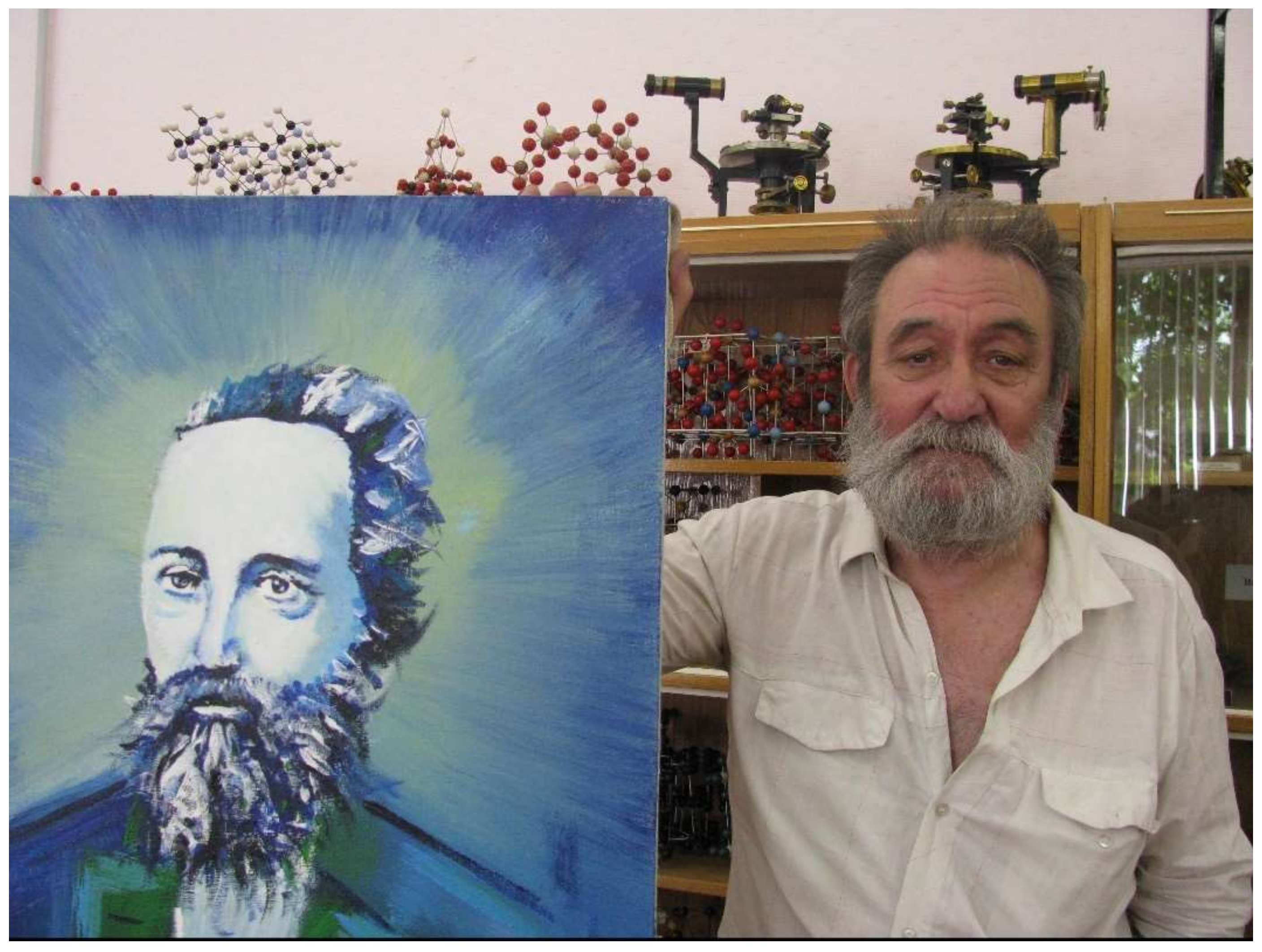
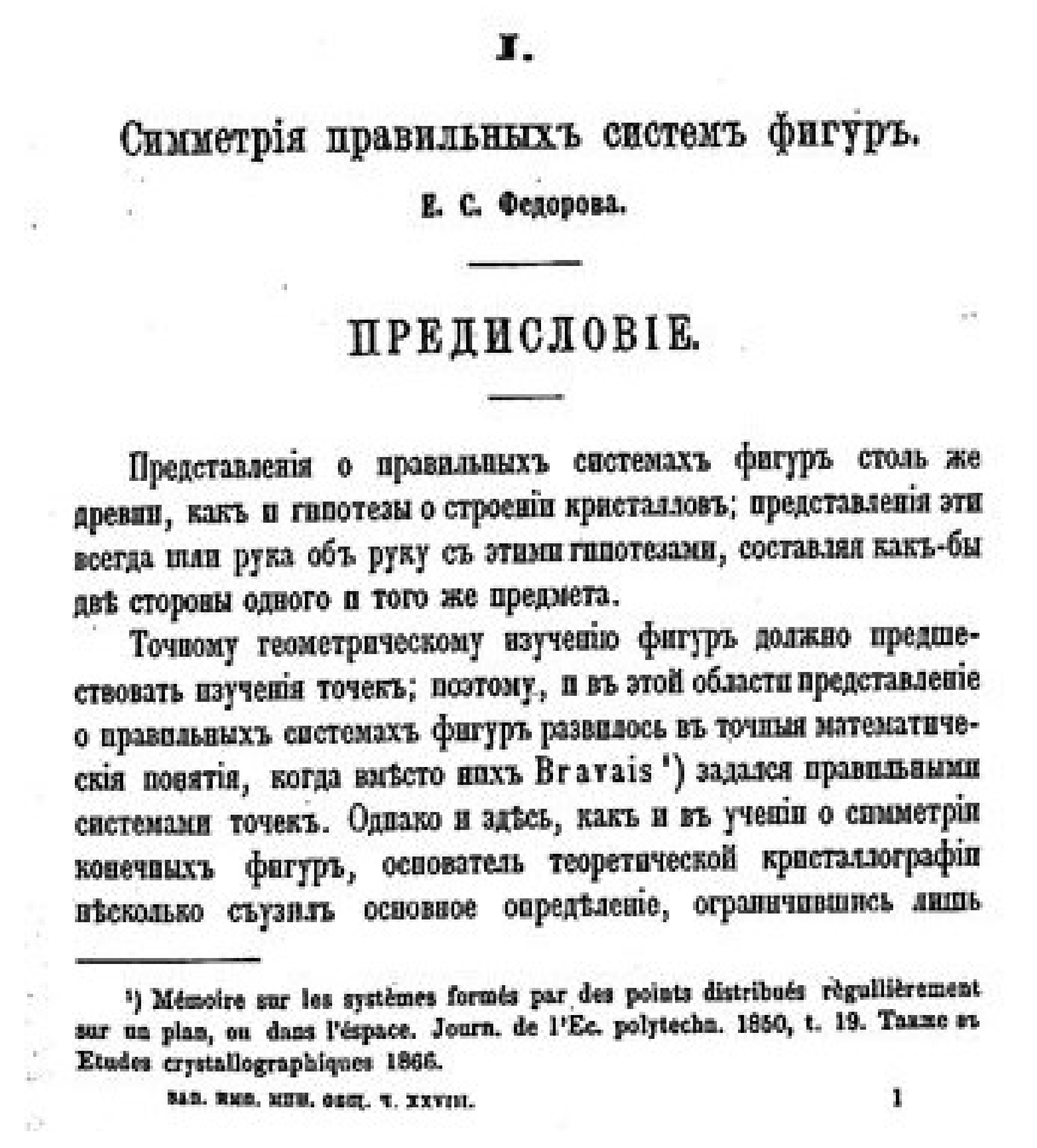
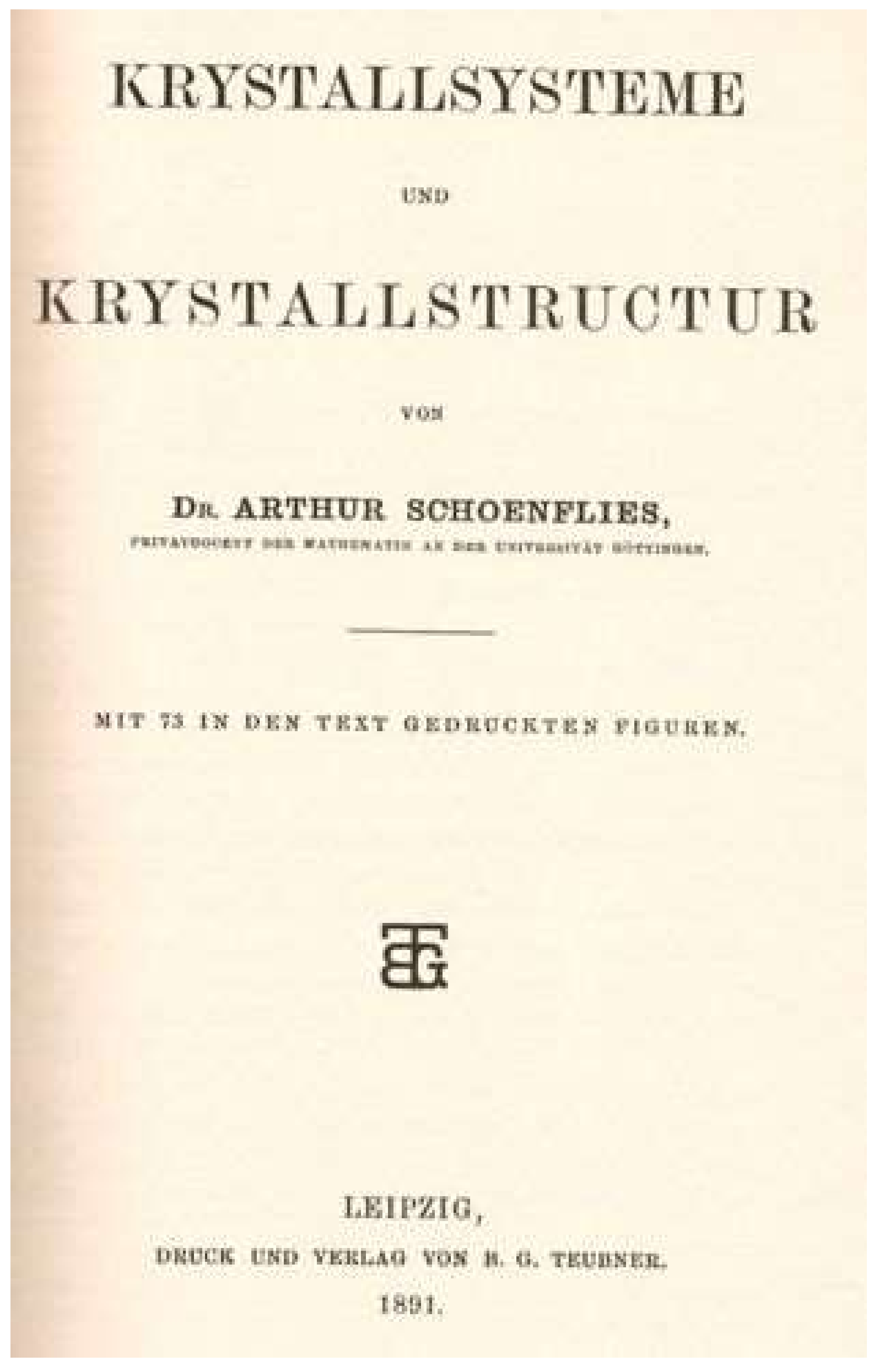
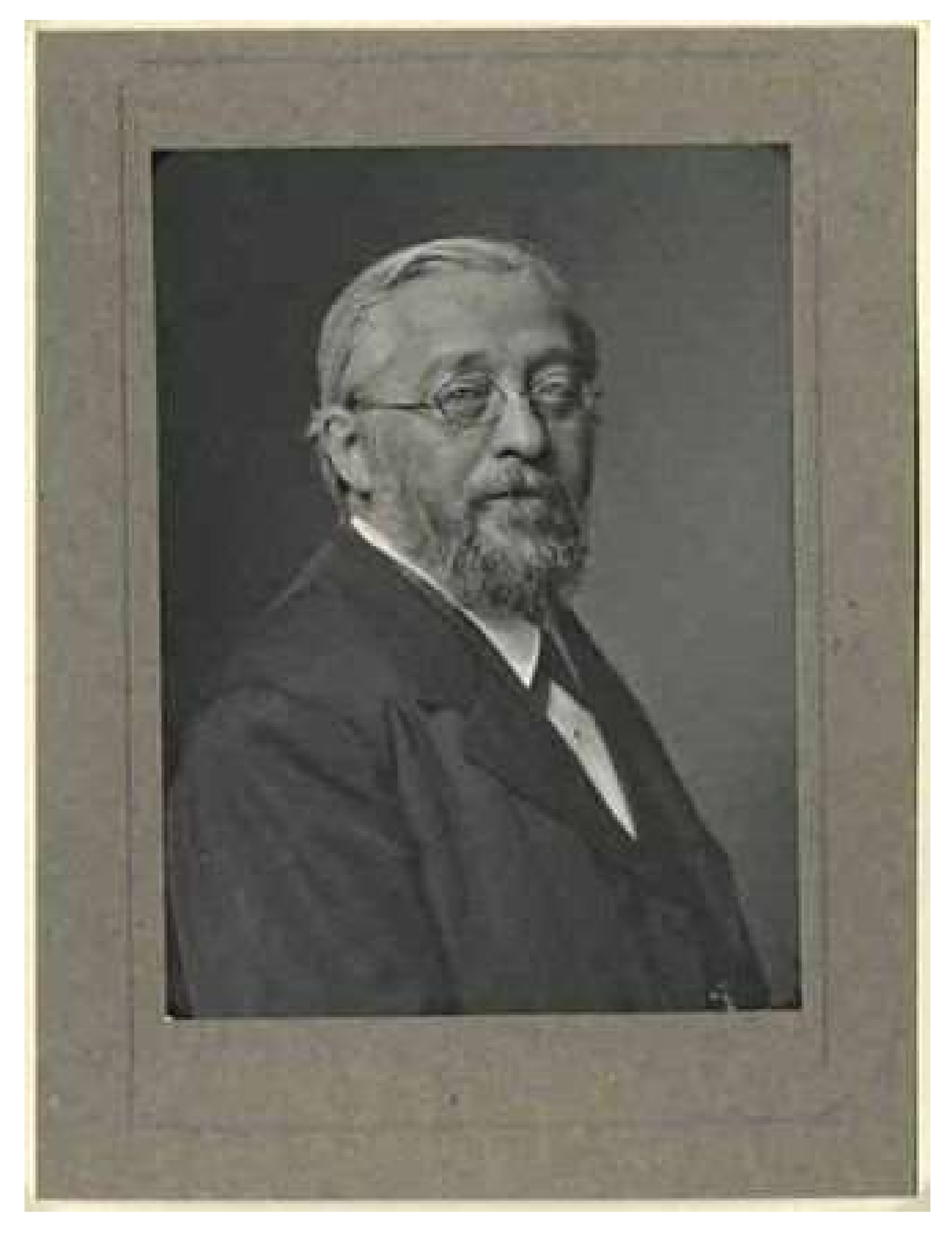

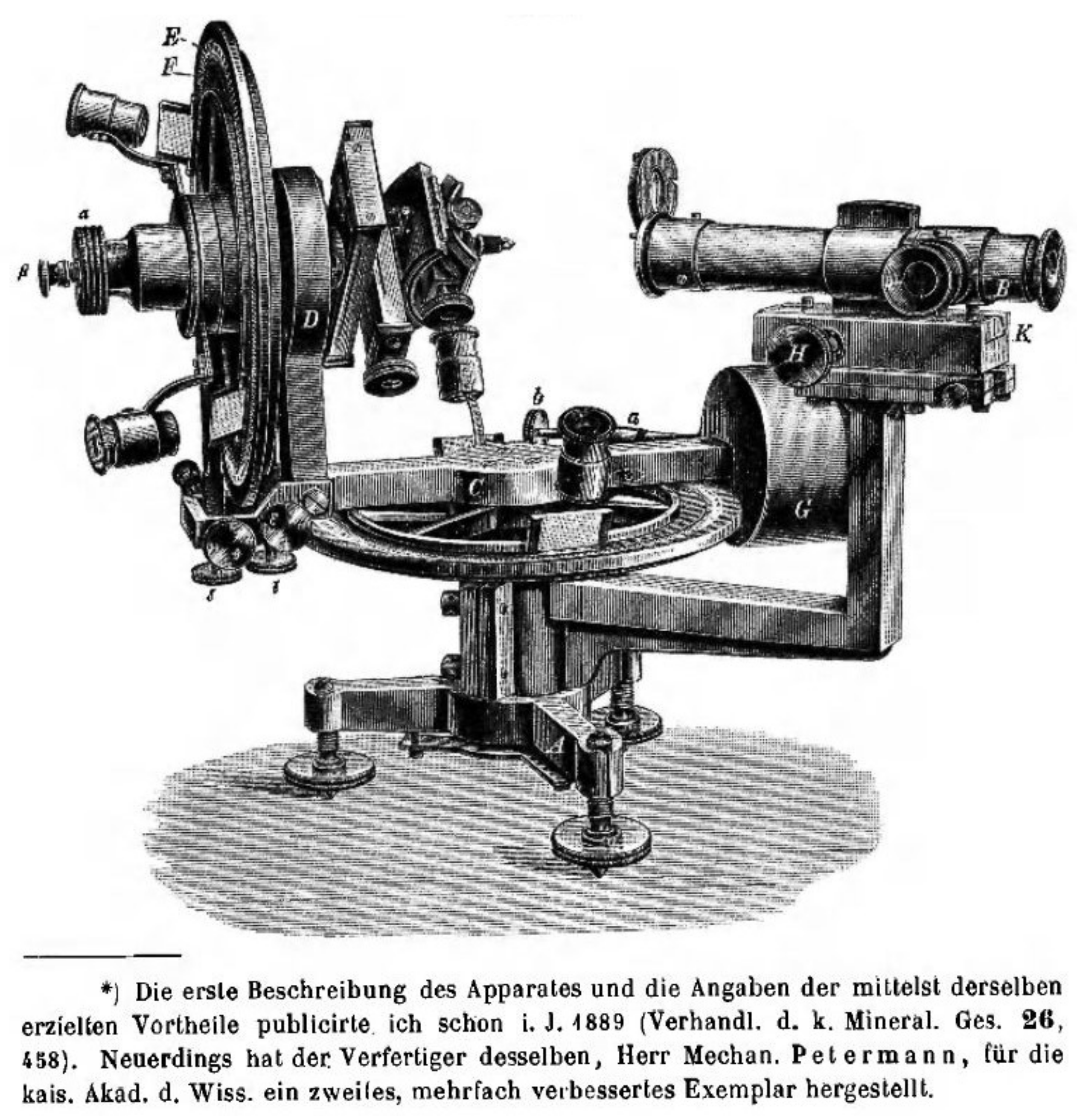
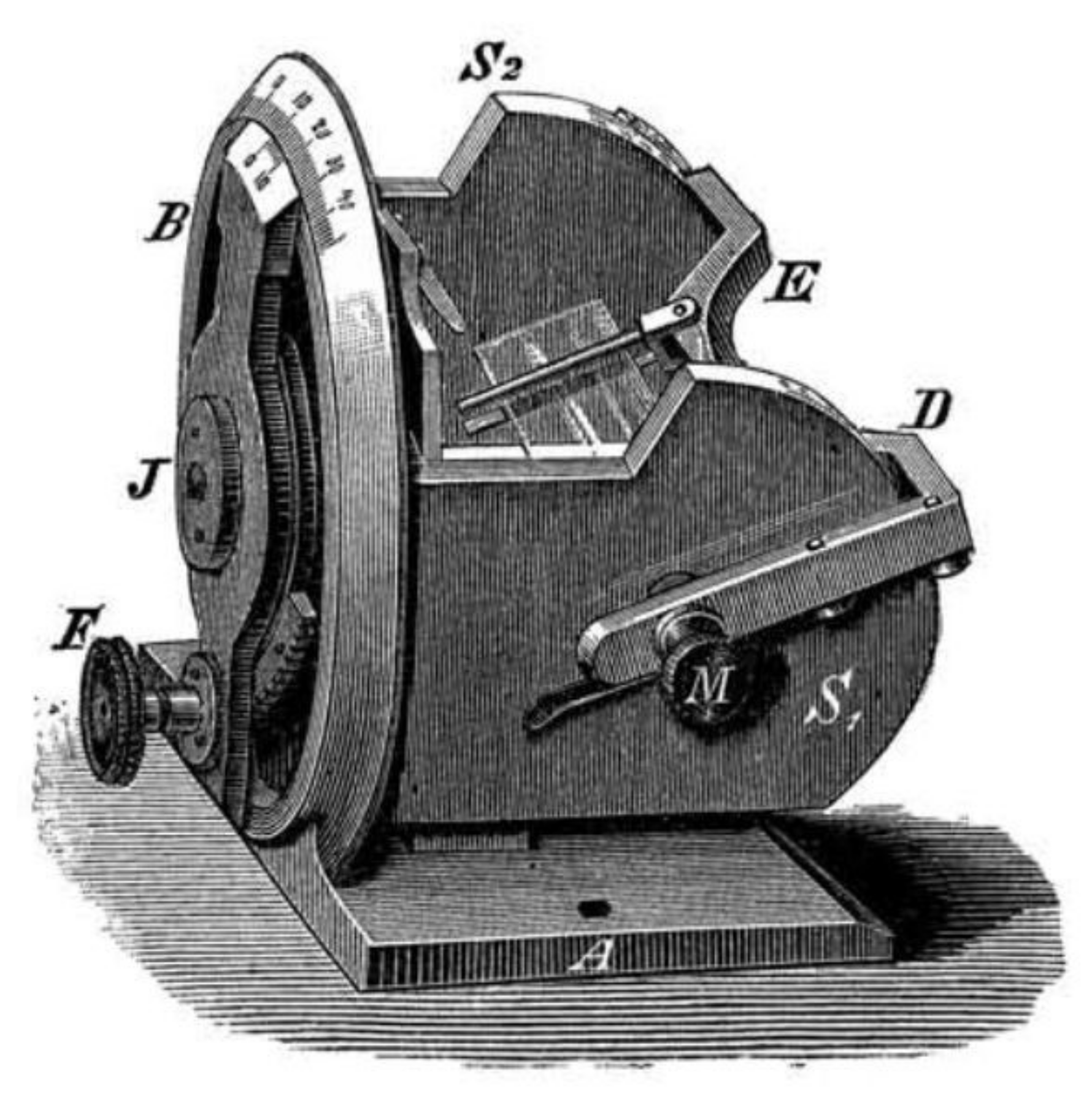

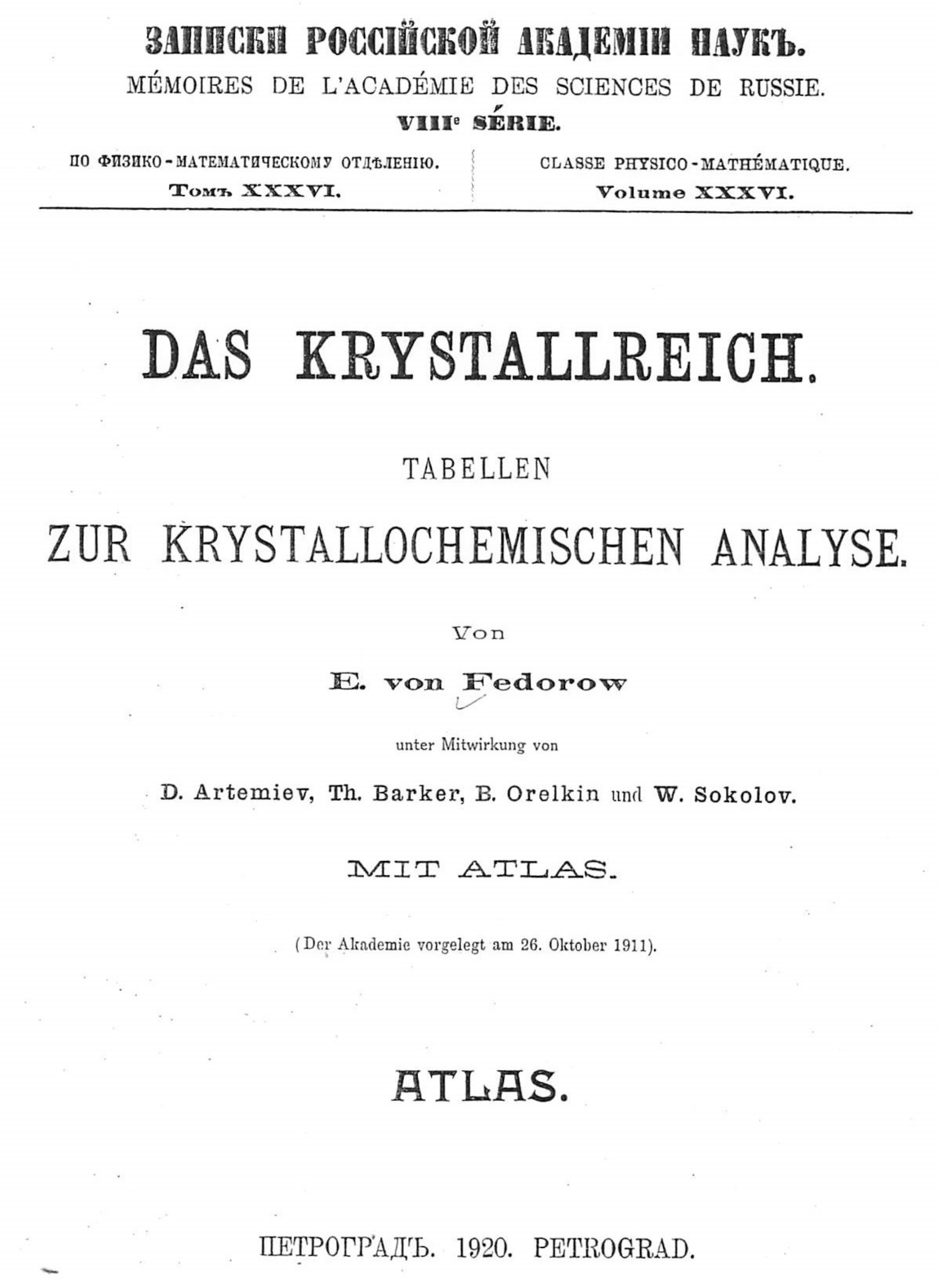
© 2020 by the authors. Licensee MDPI, Basel, Switzerland. This article is an open access article distributed under the terms and conditions of the Creative Commons Attribution (CC BY) license (http://creativecommons.org/licenses/by/4.0/).
Share and Cite
Paufler, P.; Filatov, S.K. E. S. Fedorov Promoting the Russian-German Scientific Interrelationship. Minerals 2020, 10, 181. https://doi.org/10.3390/min10020181
Paufler P, Filatov SK. E. S. Fedorov Promoting the Russian-German Scientific Interrelationship. Minerals. 2020; 10(2):181. https://doi.org/10.3390/min10020181
Chicago/Turabian StylePaufler, Peter, and Stanislav K. Filatov. 2020. "E. S. Fedorov Promoting the Russian-German Scientific Interrelationship" Minerals 10, no. 2: 181. https://doi.org/10.3390/min10020181
APA StylePaufler, P., & Filatov, S. K. (2020). E. S. Fedorov Promoting the Russian-German Scientific Interrelationship. Minerals, 10(2), 181. https://doi.org/10.3390/min10020181




